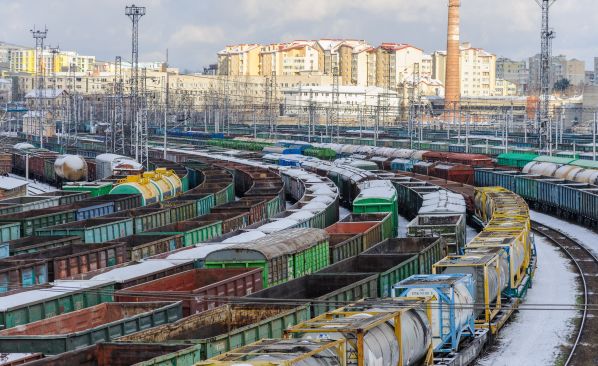THE European Commission has published an action plan to establish “Solidarity Lanes” to ensure Ukraine can export grain and import the goods it needs.
Russia’s invasion of Ukraine and its blockade of Ukraine’s Black Sea ports have prevented the export of grain and other agricultural goods. To overcome this threat to global food security the European Union (EU) says there is an urgent need to establish alternative logistics routes using all relevant transport modes.
“20 million tonnes of grain have to leave Ukraine in less than three months using the EU infrastructure,” says the EU’s transport commissioner, Ms Adina Vălean. “This is a gigantesque challenge, so it is essential to coordinate and optimise the logistics chains, put in place new routes, and avoid, as much as possible, the bottlenecks.”
Normally, 75% of Ukraine’s grain production is exported, generating around 20% of national annual export income. Before the war, Ukrainian Black Sea ports accounted for 90% of grain and oilseed exports, with around one-third of the exports destined for Europe, China and Africa respectively.
The EU says that despite efforts by the EU to ease border crossings between Ukraine and the EU, thousands of wagons and lorries are waiting for clearance on the Ukrainian side. The average wait time for wagons is 16 days and up to 30 days at some border crossing points and more grain is still stored in Ukrainian silos awaiting export.
Among the challenges is the change in track gauge between 1520mm in Ukraine and 1435mm in most of western Europe, which means most goods need to be transhipped to standard-gauge wagons or lorries. This process is time-consuming and transhipment facilities at the borders are scarce.
The European Commission (EC) and EU member states will work on the following priority initiatives:
- the EC wants additional vehicles to be made available as soon as possible to match demand and supply and the EC will set up a matchmaking logistics platform
- Ukrainian agricultural export shipments should be prioritised, and infrastructure managers should make paths available for them
- the EC wants mobile grain loaders to be urgently transferred to border terminals to speed up transhipment while a road transport agreement with Ukraine will help remove bottlenecks. The EC will also investigate options for top-up financial guarantees to hauliers
- the EC urges national authorities to apply maximum flexibility and ensure adequate staffing to accelerate procedures at border crossing points, and
- the EC will assess available storage capacity in the EU and coordinate with member states to help secure more capacity for Ukrainian exports.
“With Ukrainian ports out of commission, once again we see the crucial role of the rail sector, both for Ukrainian society and the global economy,” says Ms Jolene Molitoris, chair of the Support Ukraine Rail Task Force. “The Support Ukraine Task Force calls on the multinational rail community beginning with Europe and America to launch what may be the largest mobilisation project since the Second World War to move massive amounts of grain in a westerly direction.”
In the medium to long term, the EC says it will also try to increase the infrastructure capacity of new export corridors and set up new infrastructure connections for the reconstruction of Ukraine.
The next round of the EU’s Connecting Europe Facility (CEF) call for proposals will provide support for projects to improve transport links to Ukraine, including for rail connections and road-rail terminals. The EC also to plans to sign an agreement with Ukraine to update the maps for the Trans-European Transport Network (TEN-T), as part of its policy on extending the TEN-T network to neighbouring countries.

